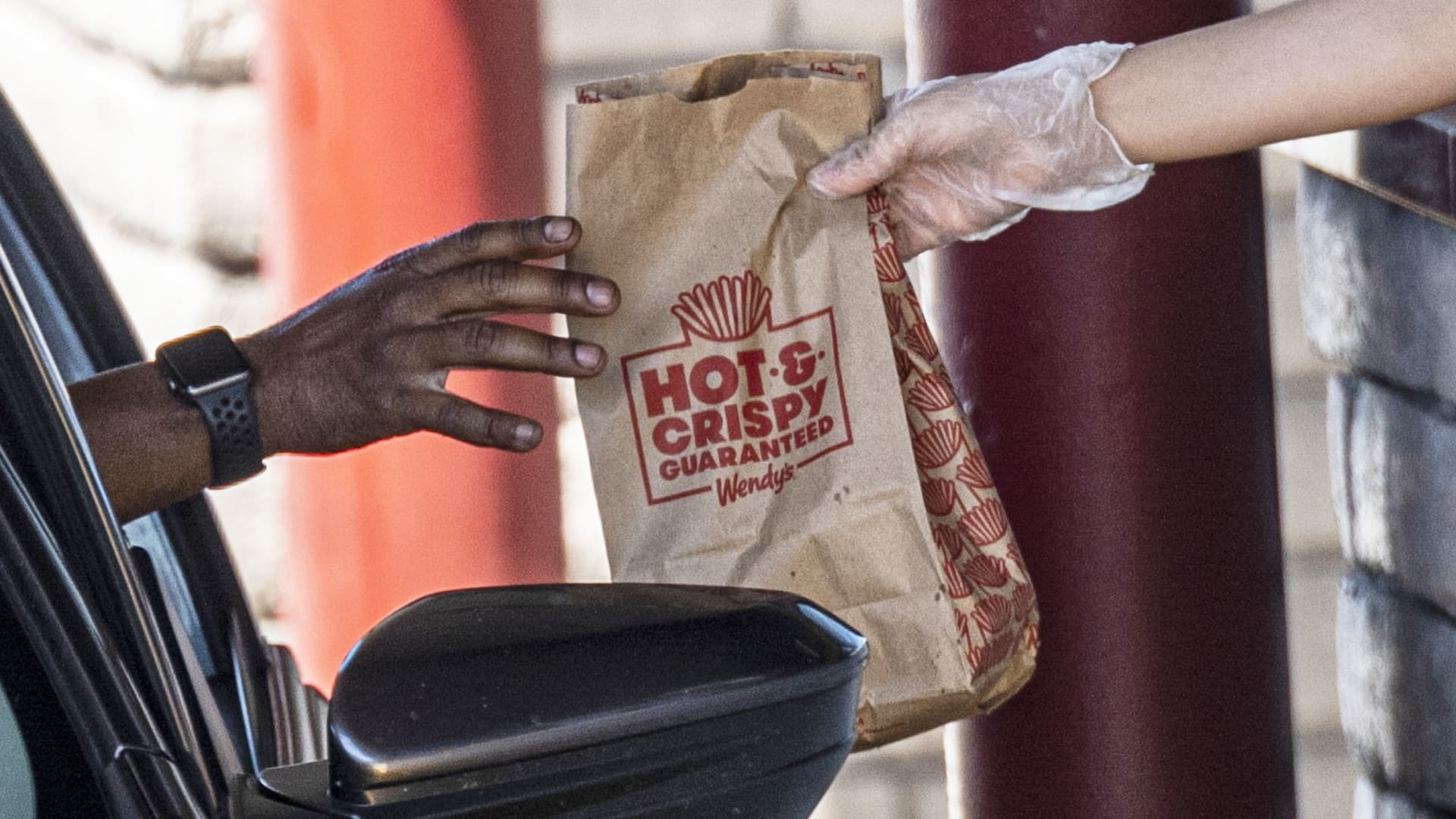Wendy’s drive-thru lanes struggle, while Chick-fil-A has the fastest service, report says


Wendy’s is often credited with pioneering drive-thru ordering, but the burger chain’s drive-thru accuracy and customer satisfaction scores lagged behind its rivals this year, according to a new study.
The study released Tuesday comes after drive-thru lanes became even more of a critical sales driver for the fast-food sector during the early days of the Covid pandemic, when many restaurants closed their dining rooms and customers felt safer inside their cars.
The shift to drive-thru ordering has pressured fast-food chains, which are still working on getting service back to pre-pandemic speeds. This year, the total average time spent in the drive-thru lane was 6 minutes and 13 seconds, according to Intouch Insight’s annual drive-thru study. That’s about 10 seconds faster than last year, but still about 45 seconds slower than 2019’s average.
The lagging performance by Wendy’s comes even though founder Dave Thomas helped popularize drive-thru windows by building a pickup window as part of the chain’s second restaurant in 1970. The concept has since become a staple in the fast-food industry, with drive-thru orders accounting for roughly two-thirds of sales. Many chains like Taco Bell and Burger King are building restaurants with two or even three drive-thru lanes, and McDonald’s and Panera Bread are among the companies testing out automating drive-thru ordering.
The Intouch Insight study was based on visits to more than 1,500 locations of Arby’s, Burger King, Carl’s Jr., Chick-fil-A, Dunkin’, Hardee’s, KFC, McDonald’s, Taco Bell and Wendy’s. Mystery shoppers ordered from the drive-thru lanes during a range of times from June to July.
Wendy’s had the lowest order accuracy and customer satisfaction scores of the chains surveyed, with only 79% of drive-thru orders fulfilled correctly. McDonald’s and Arby’s had the best accuracy rates at 89% of orders correct. Wendy’s earned a customer satisfaction score of 82%, while Carl’s Jr. and Chick-fil-A split the top spot with 95% satisfaction.
Wendy’s relatively low customer satisfaction scores are likely contributing to its recent financial performance, Evercore ISI analyst David Palmer wrote in a research note. In its second quarter, the burger chain reported U.S. same-store sales growth of 2.3%, falling short of expectations.
A representative for Wendy’s did not immediately return a request for comment from CNBC.
For the third year in a row, Chick-fil-A had the fastest time when accounting for the number of cars in line, while McDonald’s took second place. But Chick-fil-A also had the longest lines, with an average of 4.74 cars waiting for their orders. That meant it had the longest average total time spent in the drive-thru lane despite its relatively speedy service. Yum Brands’ Taco Bell leapfrogged from fifth place to third place this year, while Wendy’s slipped to sixth place, according to a CNBC analysis of the data.
Wendy’s drive-thru speed has deteriorated the most among the chains surveyed. It had an average service time of 4 minutes and 35 seconds, which was 20% longer than in 2019, according to independent analysis by Evercore’s Palmer. Other chains nearly maintained their pre-pandemic speed of service. For example, top performer Chick-fil-A’s service time of 5 minutes and 25 seconds was only 1% slower despite growing sales per restaurant by 27% in the same time, Palmer wrote in a research note.
Chick-fil-A also took first place for other metrics. Its employees were ranked the most friendly, and it tied with Taco Bell as the chain with the best food quality, meaning the food tasted as expected.
Chick-fil-A’s drive-thru lanes and reputation for customer service have helped fuel the chicken chain’s sales growth in recent years, despite controversy over donations to anti-LGBTQ groups. In 2018, it became the third-largest restaurant chain in the U.S. by sales, trailing just McDonald’s and Starbucks. The privately held chain reported $16.67 billion in systemwide sales for 2021, according to franchise disclosure documents.
This post has been syndicated from a third-party source. View the original article here.




